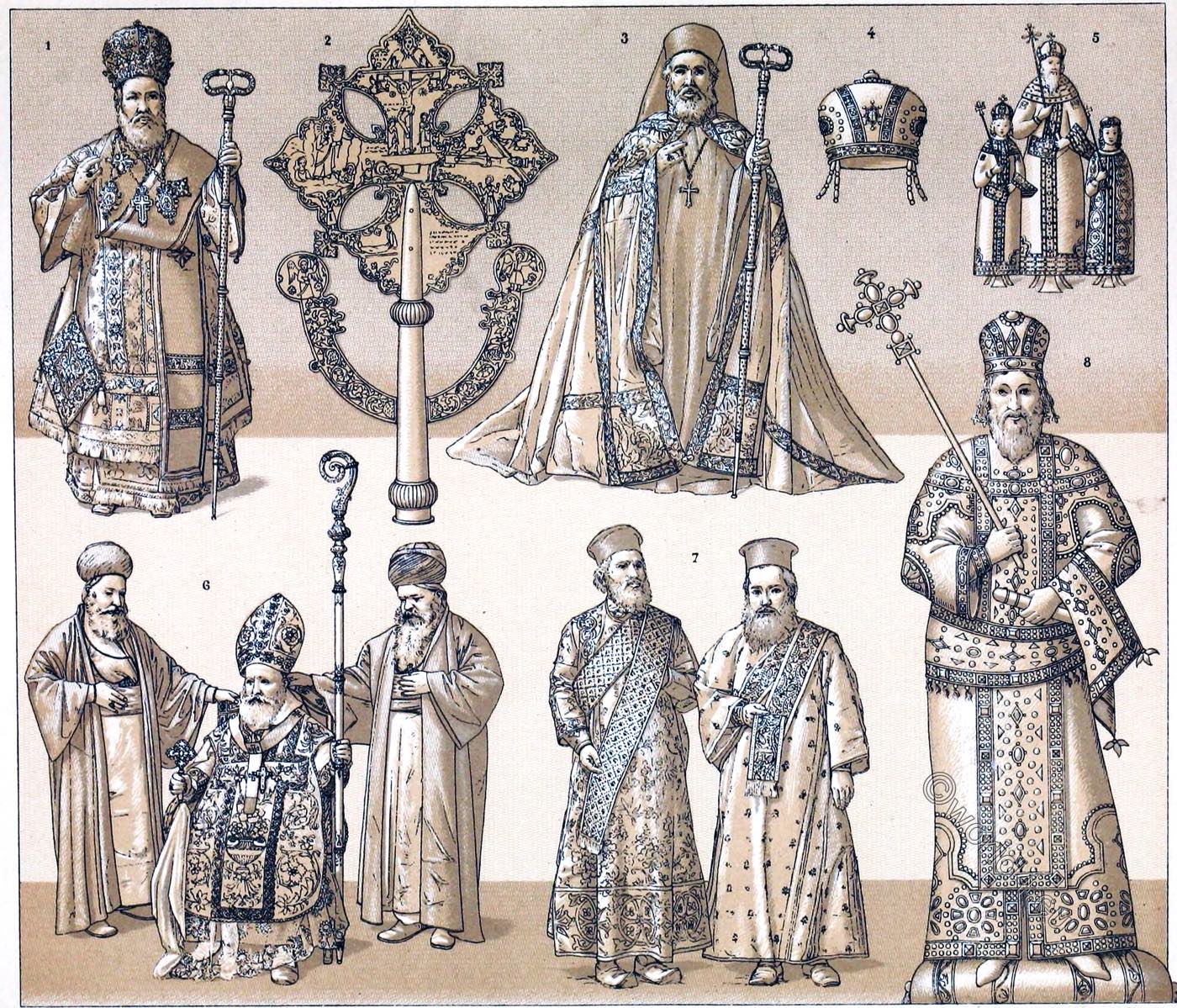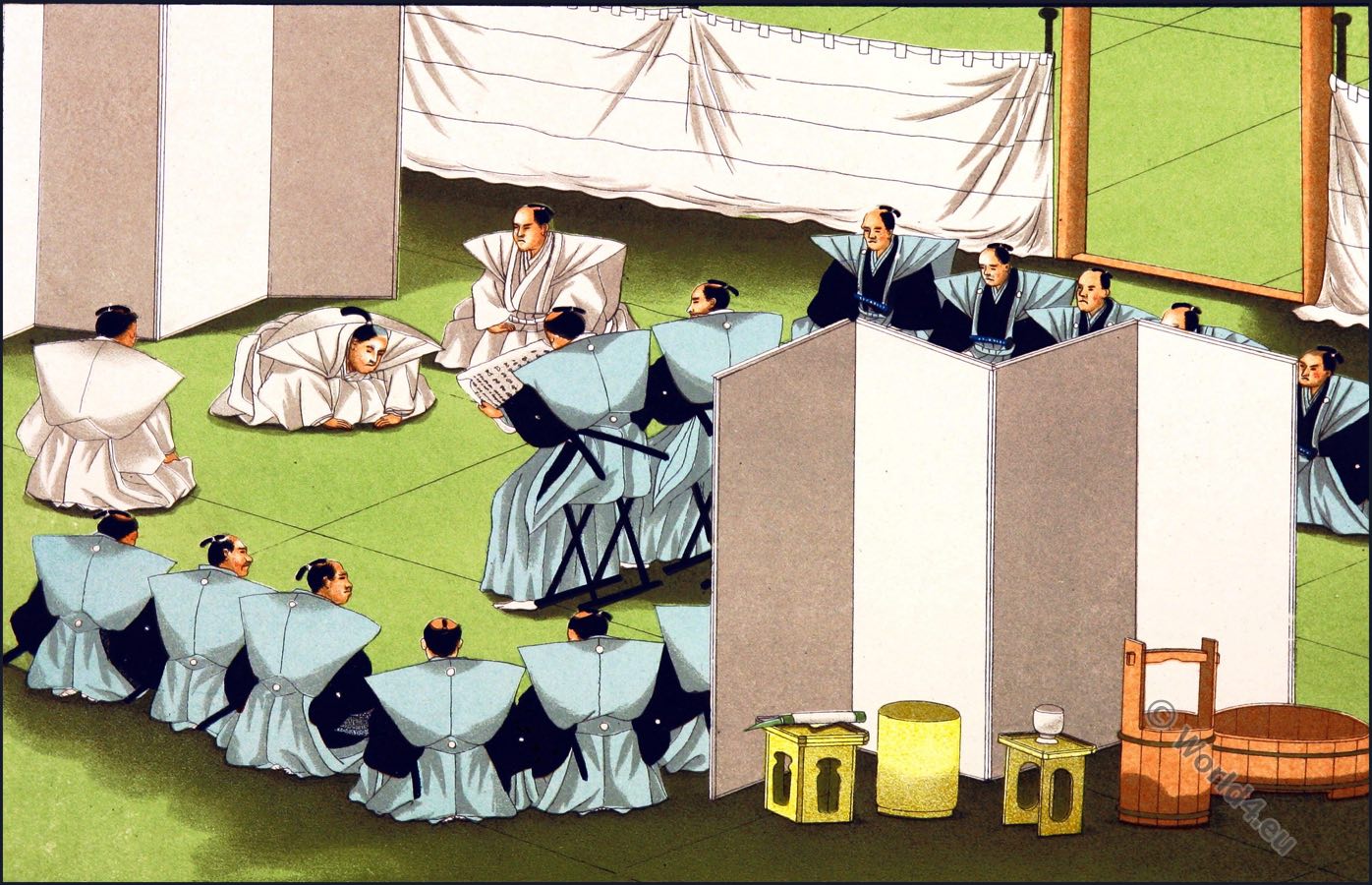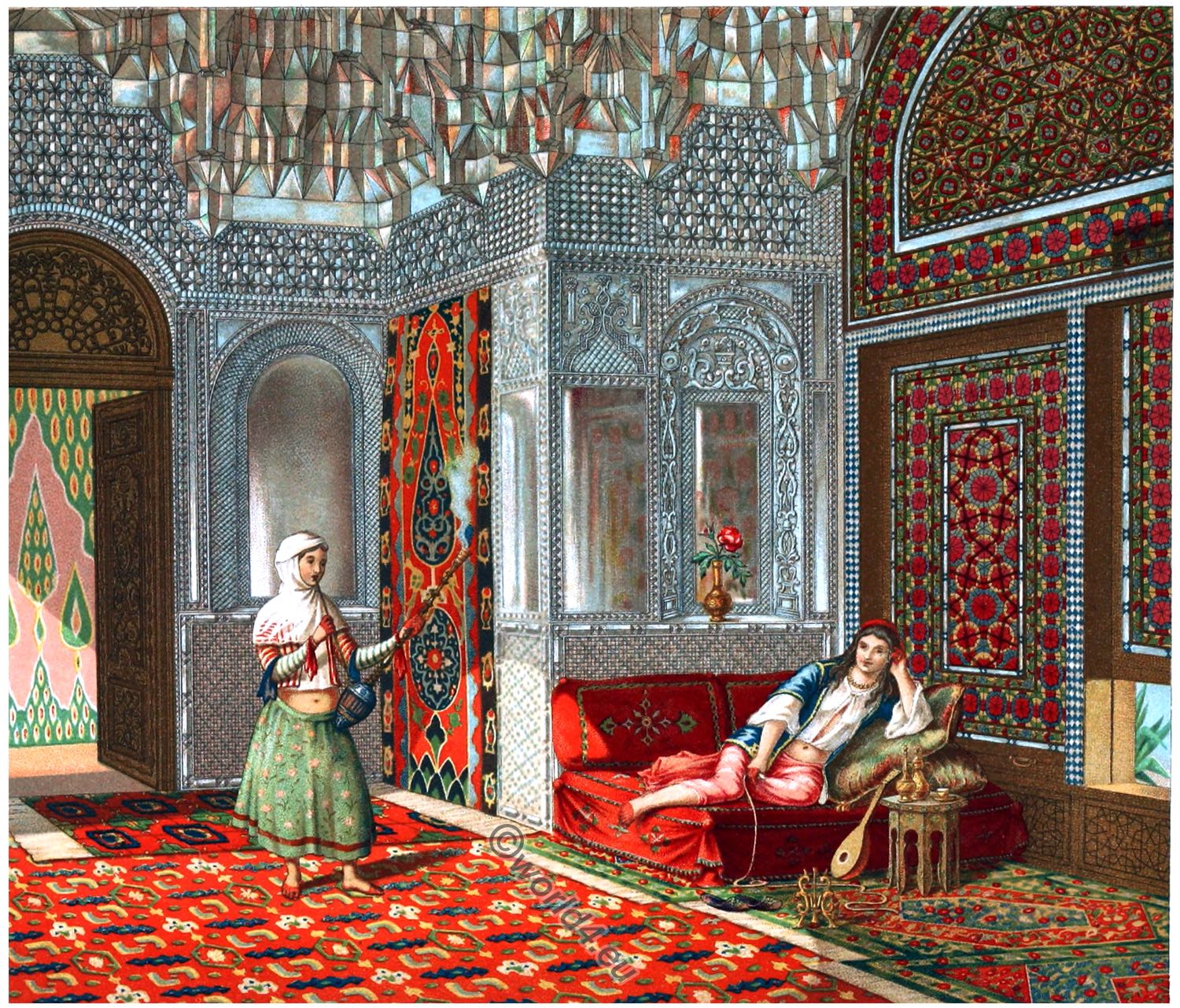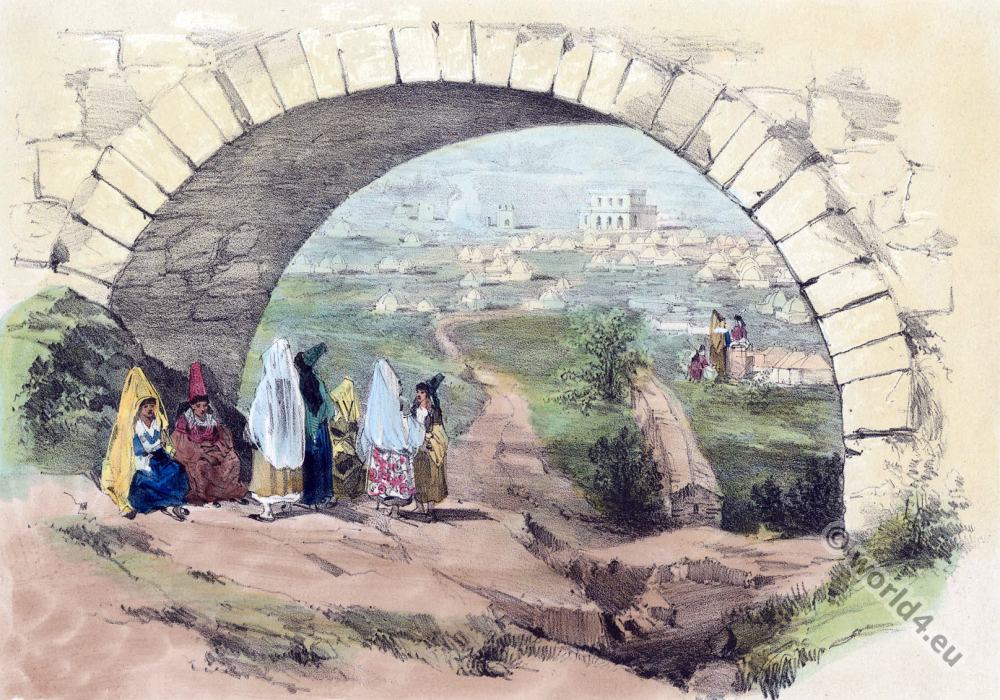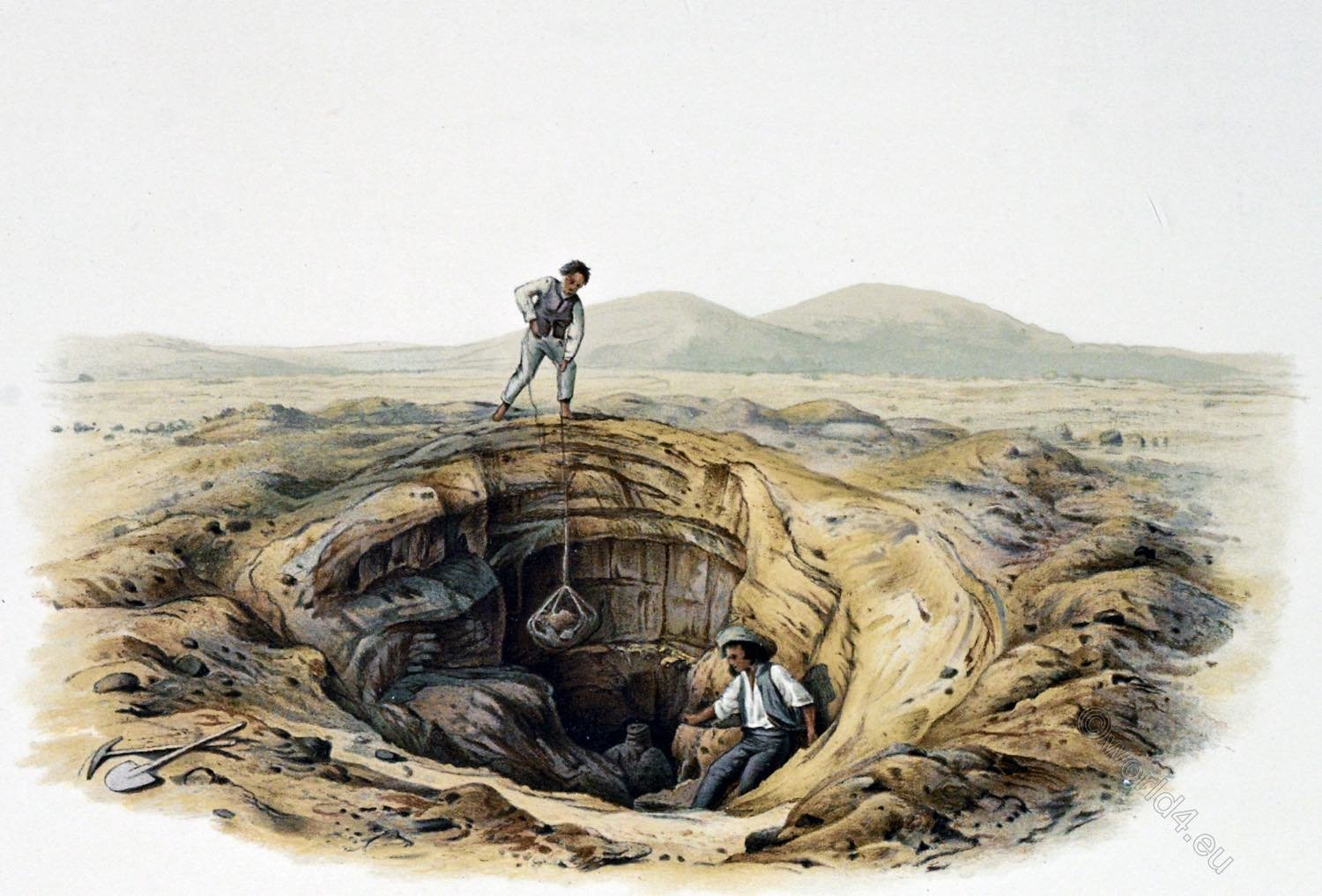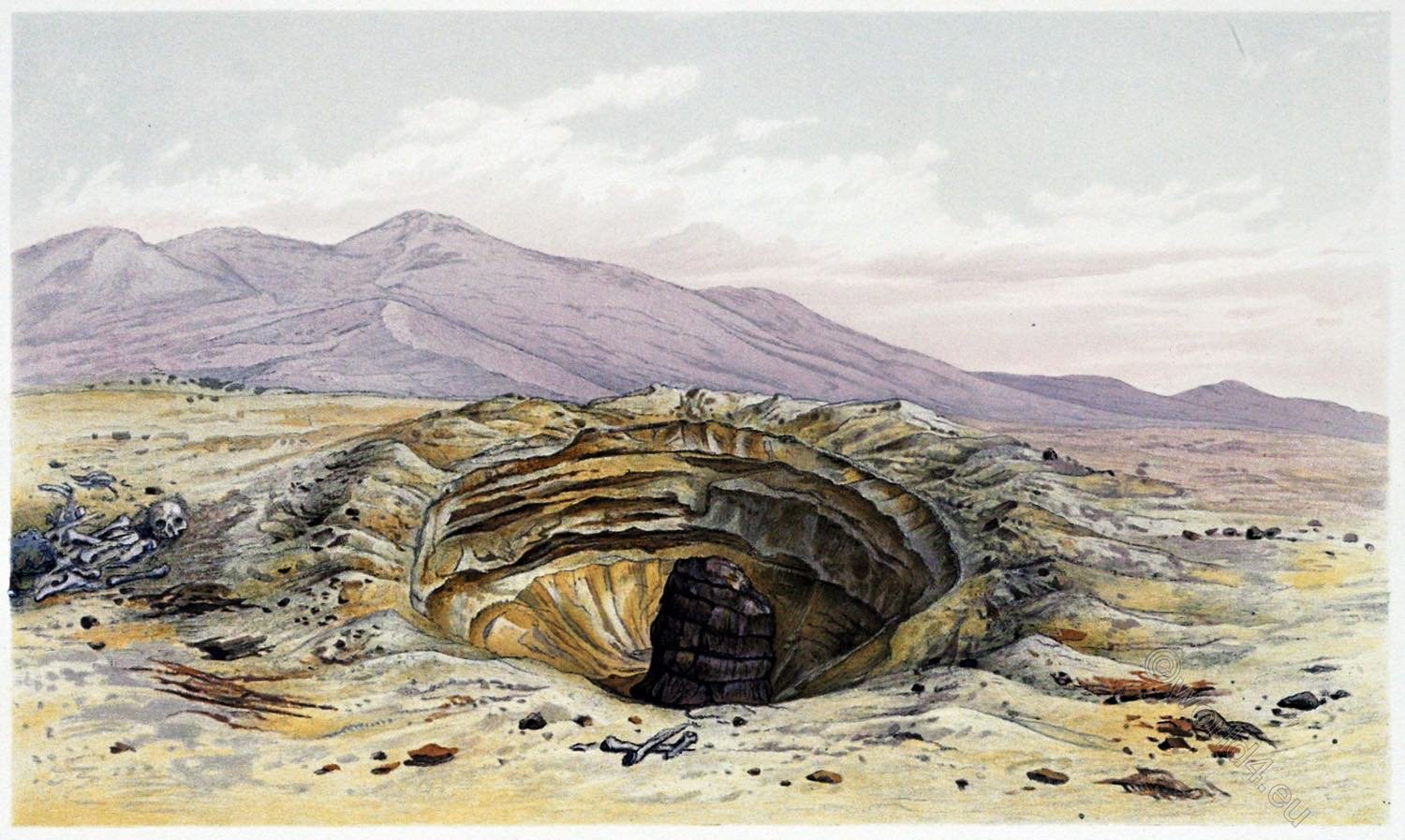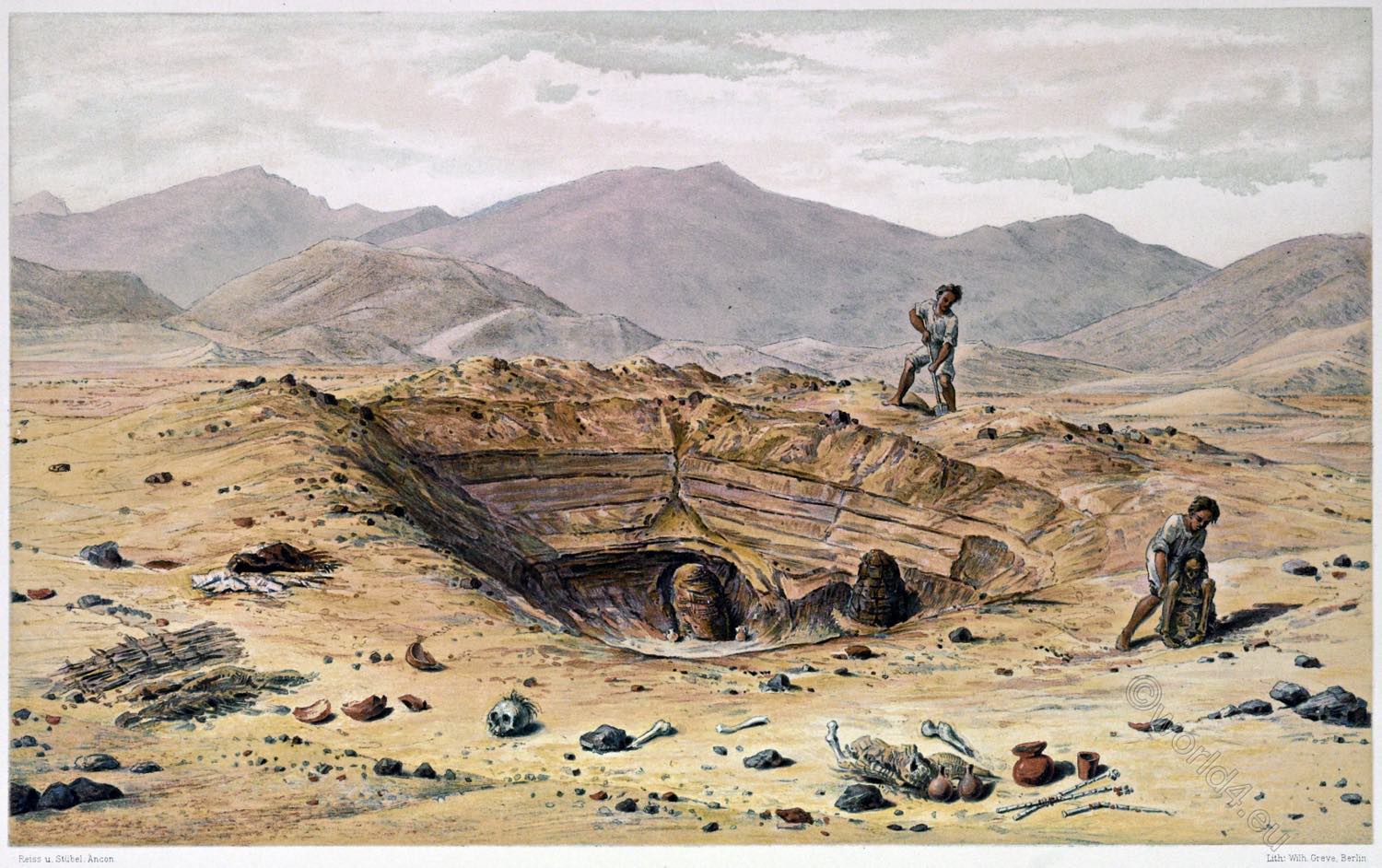
II. The Several Graves.
EXPOSED GRAVES WITH MUMMIES OF A SIMPLE TYPE.
PLATE 6.
On the surface of the ground partly covered with sand, the graves are undistinguishable by any outward indications. Hence they must be sought with the aid of a prod, which pierces the hard gravelly deposits only where they have been disturbed to excavate the grave. For even in the course of centuries the up-heaved matter covering the dead has failed to acquire the consistency of the surrounding strata.
When occurring close together it may easily happen that two graves are brought to light at one digging. Such is the case in the present instance. The parting wall of both tombs has either been disturbed during the excavation, or else was removed at the interment of the more recent of the two mummies. They are poorly equipped, surrounded only with a few earthenware vases, and placed side by side at a depth of three or four metres.
In the sides of the pits a section is exposed of the stratified sand and gravel deposits, such as in varying thicknesses are common to nearly the whole of the burial-place.
Bleached bones, scattered shreds of raiment, bast coverings and cordage used in the careful preservation of the bodies, pottery and other remains of human industry, all point at the contrast here presented between a past breathing a pious feeling of devotion for the departed, and a present betraying nothing but a spirit of vandalism.
In order to give a better idea of the proportions, two Indian workmen are introduced, as engaged in the work of exhumation. One of them is in the act of withdrawing the body of a mummy already de- vested of its cerements.
In the background appear the mountains with their sand-covered offshoots already figured on Plate 2.
Source: The necropolis of Ancon in Peru: a contribution to our knowledge of the culture and industries of the empire of the Incas being the results of excavations made on the spot by Wilhelm Reiss (1838-1908); Alphons Stübel (1835-1904), joint author; Wilhelm Greve, lithographer; Augustus Henry Keane (1833-1912), translator; Ludwig Wittmack (1839-1929); Rudolf Virchow (1821-1902); Alfred Nehring (1845-1904). Berlin: A. Asher & Co.; New York : Sole agent for America, Dodd, Mead & Company, 755 Broadway, 1880.
Continuing
II. The Several Graves.
Plate. 5. The deep grave of the false-headed Mummies.
Plate. 6. Exposed graves with Mummies of simple type.
Plate. 7. Solitary grave of a simple equipped Mummies.
Plate. 8. Interments under earthenware vessels.
Plate. 9. Interments under fragments of earthenware.
Plate. 10. Sections of the graves.
Discover more from World4 Costume Culture History
Subscribe to get the latest posts sent to your email.

